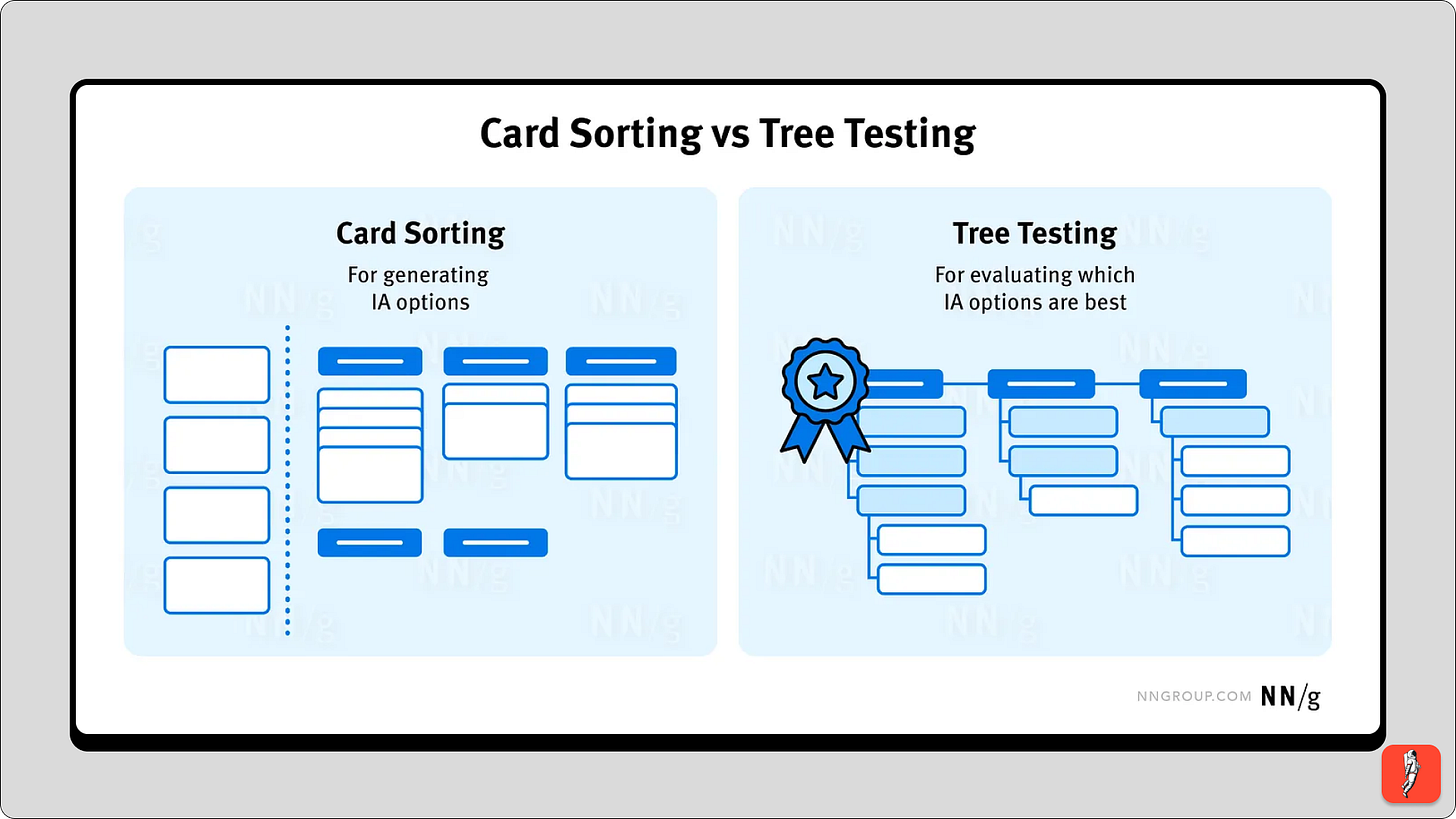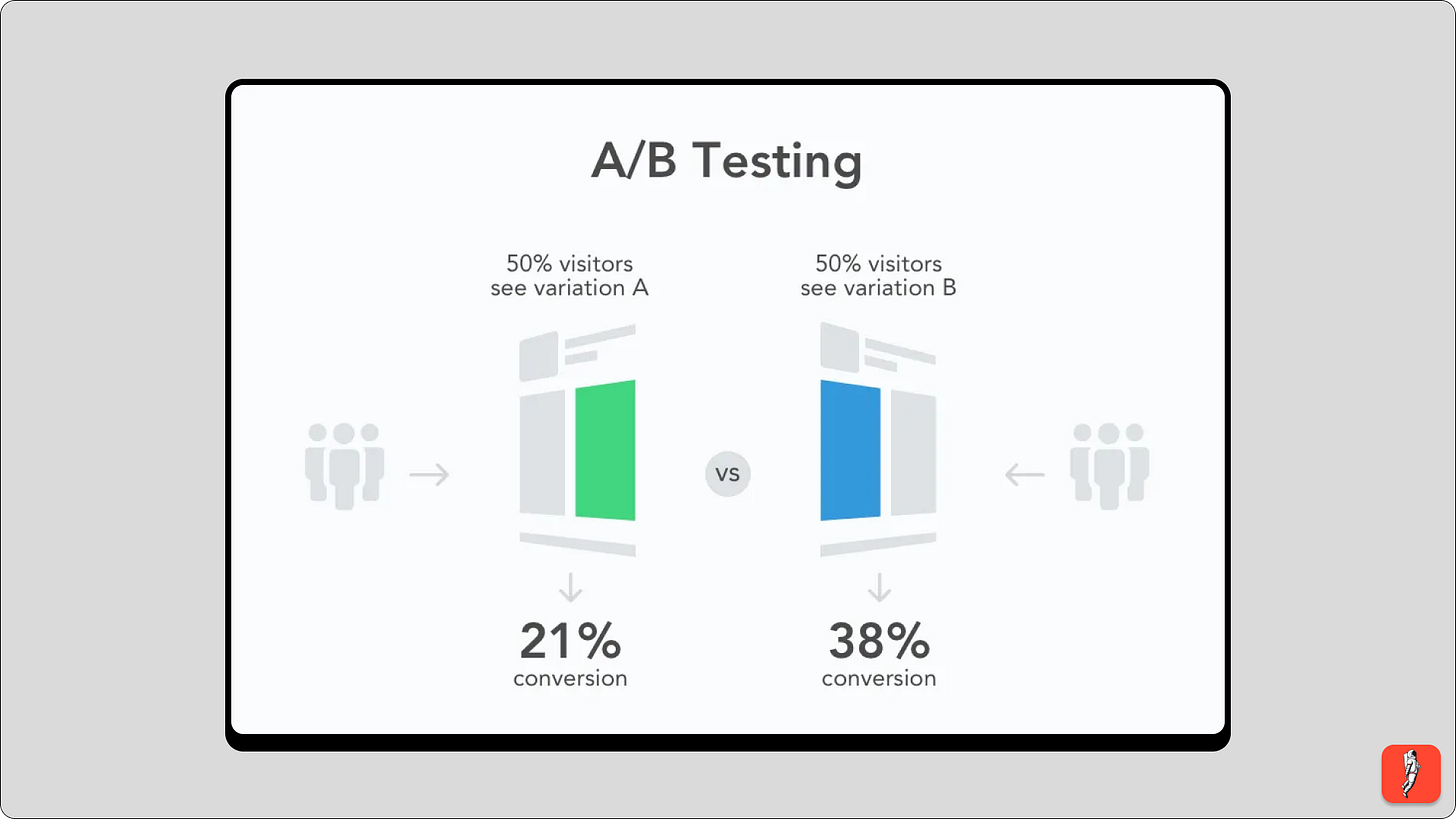Simplifying UX Research + Upcoming Podcast Guest
Preview an upcoming podcast episode with Jelena Colak, where we discuss UX design, information architecture, and AI’s role in creativity. Plus, explore simplified UX research methods and access a free
Hello Designers and welcome to This Week's Cristian Talks Product Design Newsletter!
I want to start with a quick note of transparency: this week’s post will be a bit shorter than usual. It’s been a hectic week on my end, and I didn’t quite get the chance to dedicate as much time as I typically do to the newsletter.
That said, I’m excited to share a few updates, resources, and insights that I hope will add some value to your UX journey and maybe even help you accelerate your design career.
What We’ll Cover Today
Podcast Update: A conversation with Jelena Colak, creator of TechBrat
Simplifying UX Research: Practical methods and tools for beginners
Podcast Guest Incoming: Jelena Colak from TechBrat
This week, I had the pleasure of speaking with Jelena Colak, the creator of the TechBrat Newsletter, about her fascinating journey into UX design, how she’s bridged her background in journalism with her design career, and her deep focus on information architecture. Jelena shared invaluable insights into the importance of designing for the entire user journey and how emerging technologies like AI are reshaping the field.
We explored topics like:
The overlap between journalism and UX design, and how strong research skills translate into better user experiences and easier career progression.
Why user experience starts long before someone interacts with a product, making it critical to consider the full journey.
The role of information architecture in UX design—how designers can think about structuring content and navigation to create seamless experiences and its broader impact on usability.
The balance between creativity and usability, and why it’s a challenge worth embracing.
How AI serves as a tool to enhance, not replace, the designer’s role.
Jelena’s approach to staying curious, adapting to trends, and maintaining a focus on usability is both inspiring and practical. We also discussed where design is headed, with a potential blend of minimalism and maximalism on the horizon, while keeping usability front and center.
This conversation left me with so many takeaways, and I can’t wait to share the full episode with you. For now, I hope you enjoy the clip! 😉
Simplifying UX Research: Practical Methods & Tools for Beginners
UX research doesn’t have to be intimidating, especially if you know where to start. Here’s a breakdown of some essential research methods that can help any designer:
User Interviews
Interviews are direct conversations with users or stakeholders to gather qualitative insights about their needs, behaviors, and challenges. They’re a staple in UX research and vary depending on your goals:
Directed Interviews
What it is: These are structured, question-and-answer sessions where the researcher asks predefined questions.
Best for: When you need specific insights from a large group of users, or want to compare answers across participants.
Why use it: It provides clear, actionable data that’s easy to organize and analyze.Non-Directed Interviews
What it is: These are more conversational and flexible. The interviewer starts with a general topic but allows the participant to steer the discussion.
Best for: Sensitive or complex topics where direct questioning might limit openness.
Why use it: Encourages participants to share deeper insights, often uncovering unexpected details.Ethnographic Interviews
What it is: This involves observing users in their natural environments while they perform tasks or go about their day.
Best for: Understanding real-world behavior, routines, and pain points.
Why use it: It reveals gaps between what users say and what they actually do, providing context that’s hard to capture in other methods.
Surveys & Questionnaires
What it is: Surveys and questionnaires are tools for collecting a large volume of quantitative data from users in a short amount of time.
Best for: Projects with diverse or large user groups, particularly when anonymity is important or when you need to validate assumptions with a wide sample.
Why use it: They’re scalable and efficient for understanding general trends, preferences, and feedback. Tools like Google Forms, Typeform, and SurveyMonkey make them easy to deploy.
Pro Tip: Write clear, unbiased questions to avoid misinterpretation and ensure meaningful responses.
Usability Testing
What it is: This involves observing users as they interact with your product, asking them to complete specific tasks while identifying friction points. Usability tests come in three forms:
Moderated Testing
What it is: A facilitator guides the session, asking questions and encouraging users to think aloud as they perform tasks.
Best for: Gaining rich insights about user behavior while iterating on complex designs.
Why use it: It allows for real-time clarification and follow-up questions to understand user decisions.Unmoderated Testing
What it is: Users complete tasks on their own time, often via recorded online platforms like UserTesting or Maze.
Best for: Fast, budget-friendly testing with remote participants.
Why use it: It captures authentic user behavior without external influence, but lacks immediate feedback.Guerrilla Testing
What it is: Quick, informal testing done in public places (e.g., coffee shops), where random participants are asked to try out a product in exchange for small incentives.
Best for: Early-stage feedback for products with broad appeal.
Why use it: It’s lightweight and budget-friendly but may not provide the most reliable data for niche audiences.
Tree Testing & Card Sorting
These methods are critical for structuring content and improving information architecture (IA):
Card Sorting
What it is: Users organize terms or topics into categories that make sense to them.
Best for: Projects requiring a clear and intuitive site map or navigation.
Why use it: It helps you understand how users think about content and the relationships between topics.Tree Testing
What it is: Users navigate through a simplified version of your site structure to complete tasks, validating the hierarchy and naming conventions.
Best for: Testing the usability of your IA before investing in detailed design.
Why use it: It ensures that users can find information easily, reducing frustration later.
A/B Testing
What it is: A method for comparing two variations of a design (e.g., different layouts, buttons, or headlines) to see which one performs better.
Best for: Projects where data-driven decisions are needed to refine specific design elements.
Why use it: By directly measuring user actions, A/B testing eliminates guesswork and ensures your design choices are supported by real-world results.
Pro Tip: Focus on one variable at a time (e.g., call-to-action text) for clearer results.
Resource Spotlight: Guide to Running User Interviews
By understanding these methods and their best use cases, you’ll be able to approach UX research with confidence and select the tools that align with your project’s goals. If you’re ready to dive into your first user research session, check out this handy resource for crafting effective questions: Starter Questions for User Research.
I hope these resources and ideas inspire your next project. As always, feel free to reach out with feedback, questions, or suggestions—your input helps shape this newsletter into what it is today.
Until next time,
Cristian







